What is Low Code?
Developers can leverage a library of reusable components, turning business requirements into customizable building blocks for new applications.
Your guide to learn: Who can use low code, Top low code use cases, Benefits of low code, Low code vs no code, Is low code secure, Low code trends
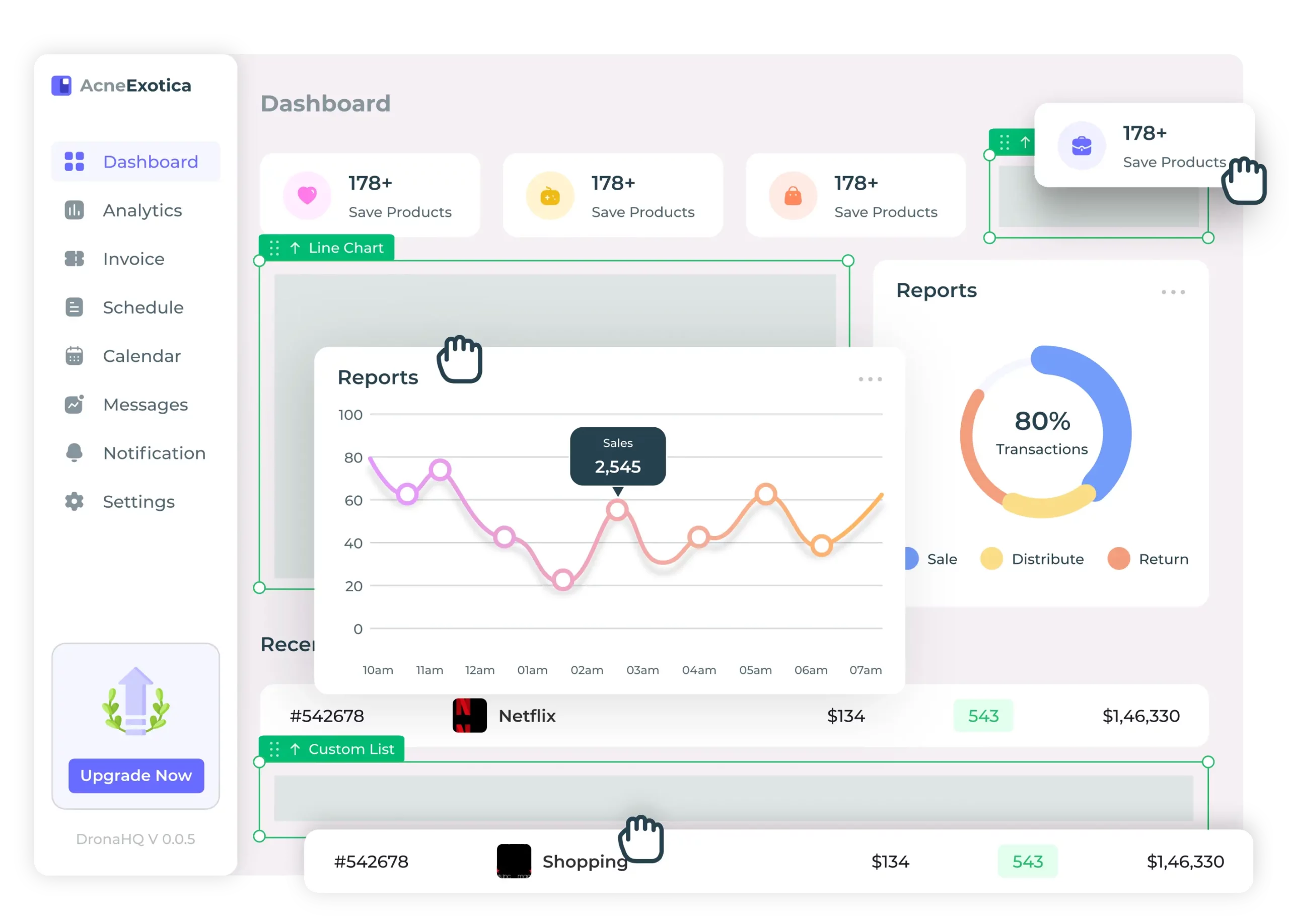




Low code App Development Features
Low code is the natural extension from code. It dramatically reduces the amount of time required to build and launch cutting-edge internal tools and custom apps. It helps developers move faster by allowing them to build intuitive user interfaces from drag-and-drop components. Developers can also make their own controls, functions and connectors that can be reused across all the solutions they build.
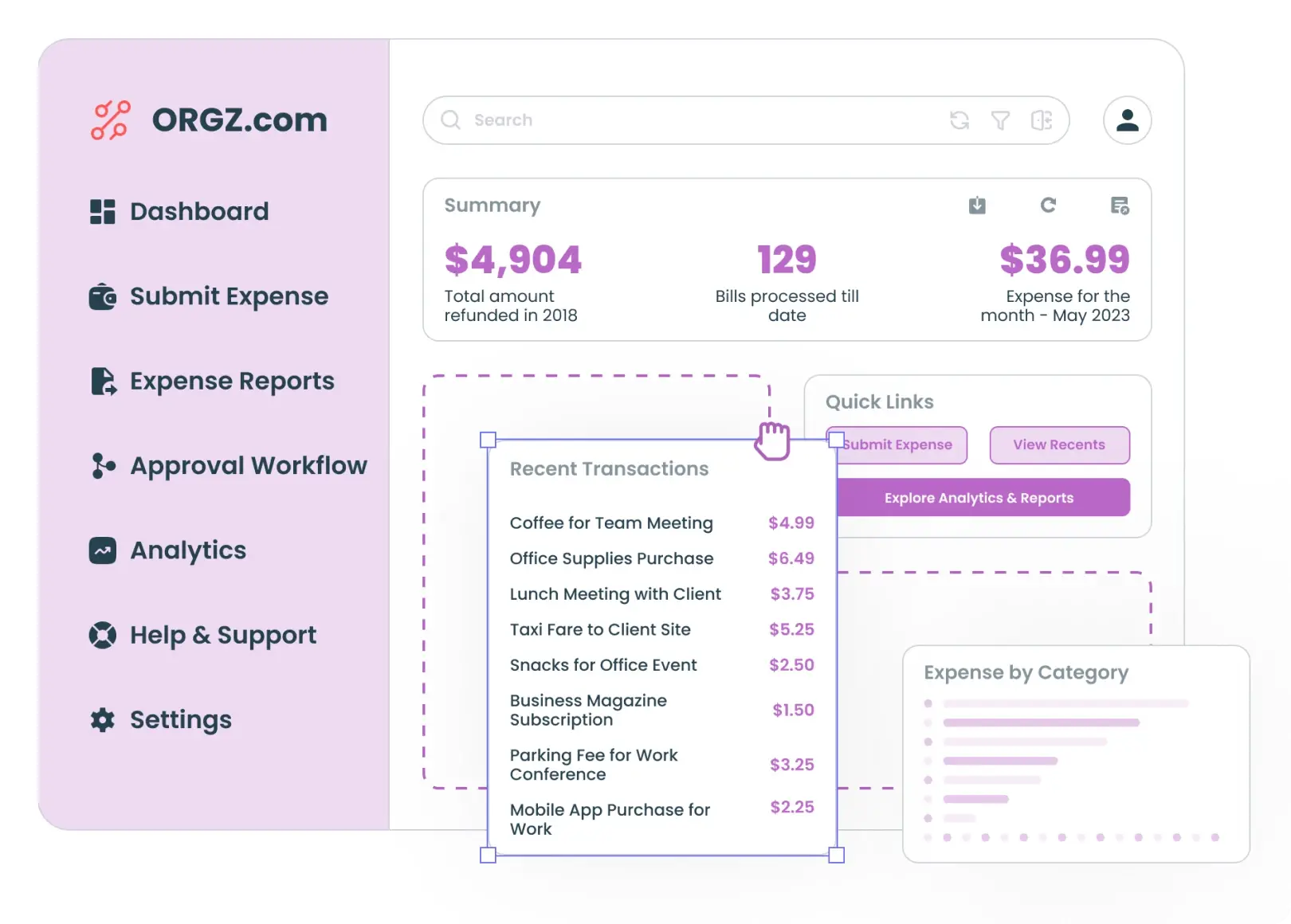
Visual UI development
Low code UI is typically the outcome of a visual modelling tool, usually a drag-and-drop interface, reducing the lines of code that needs to be written to a minimum.
App makers can design UI, write queries, model workflows, and declare front-end logic.
-
Utilize existing talent to build apps faster
-
Improve cross-team collaboration
-
Free up expert time for more complex tasks
-
Streamline development and reduce rework
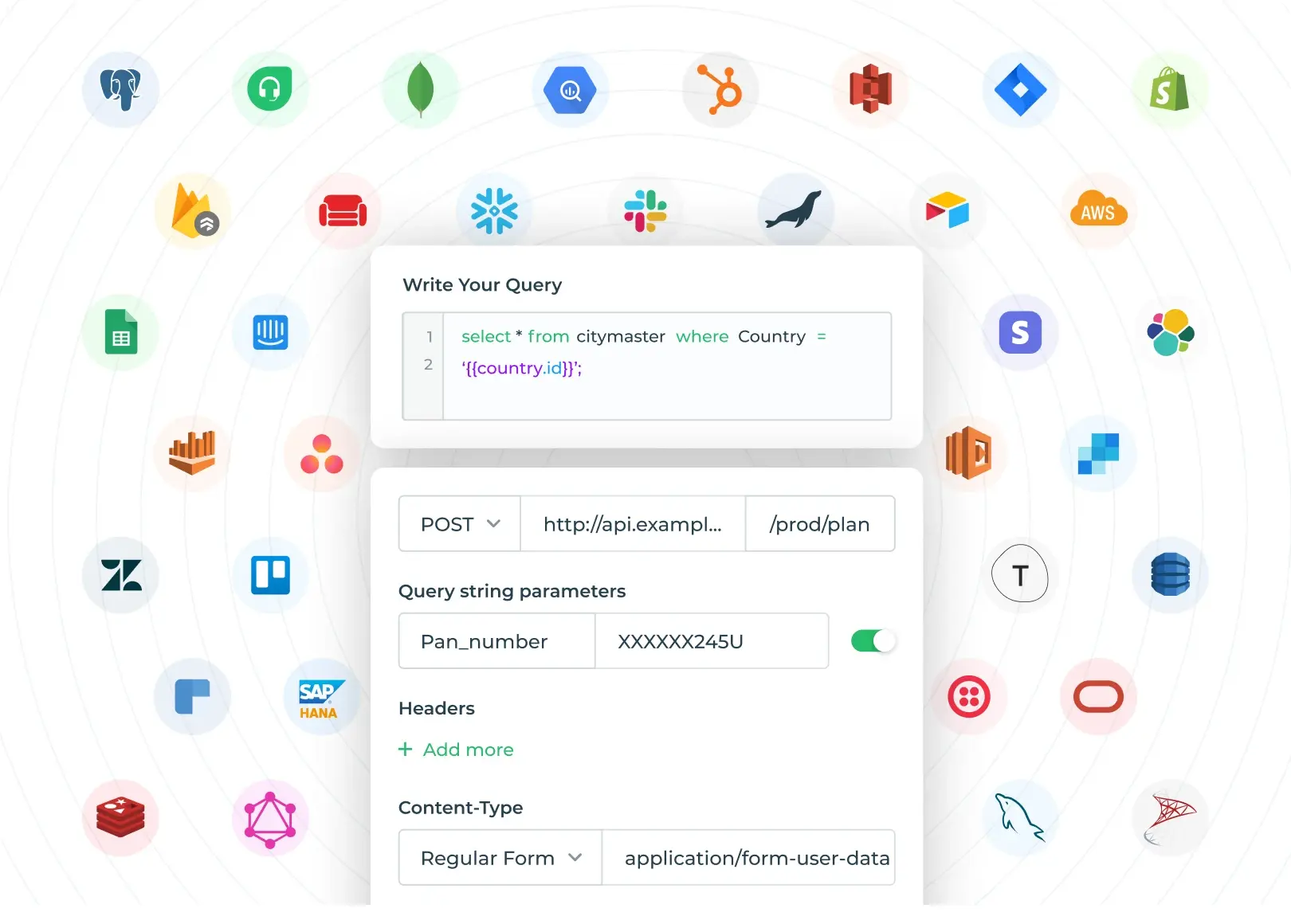
Secure data integration
Low code development offers various kinds of native integration to database, APIs, and back-end services. This allows to work and build software on top of any data source.
Users can integrate any API – REST, GraphQL, gRPC in just few simple steps.
-
Reclaim 30%+ developer time
-
Manage systems at larger scales
-
Discover and share data seamlessly
-
Create components and microservices rapidly
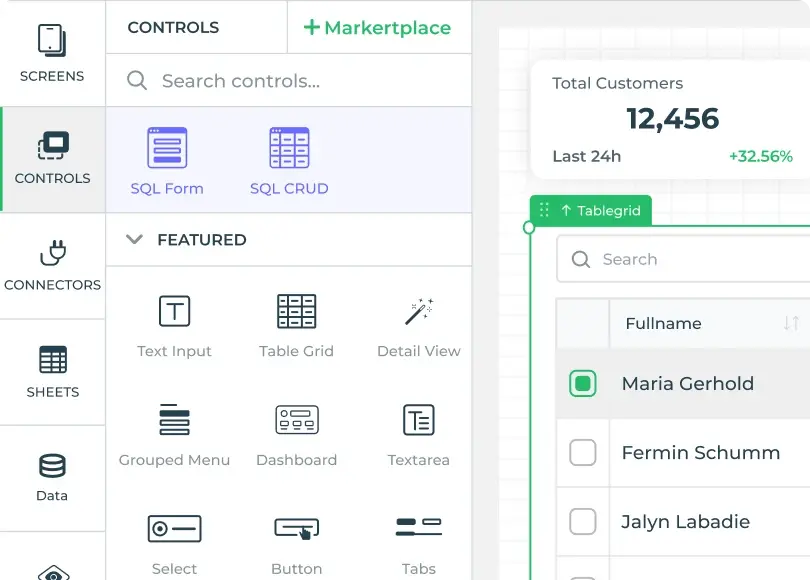
Component Reusability
Low code app development tools come with pre-built controls as well as the ability to create new controls. These controls can be reused to develop different solutions more quickly, making custom app development more efficient over time.
-
Expedite development with efficiency
-
Rely on pre-tested
-
secure elements
-
Ensure app consistency and scalability
-
Swiftly extend features as needed
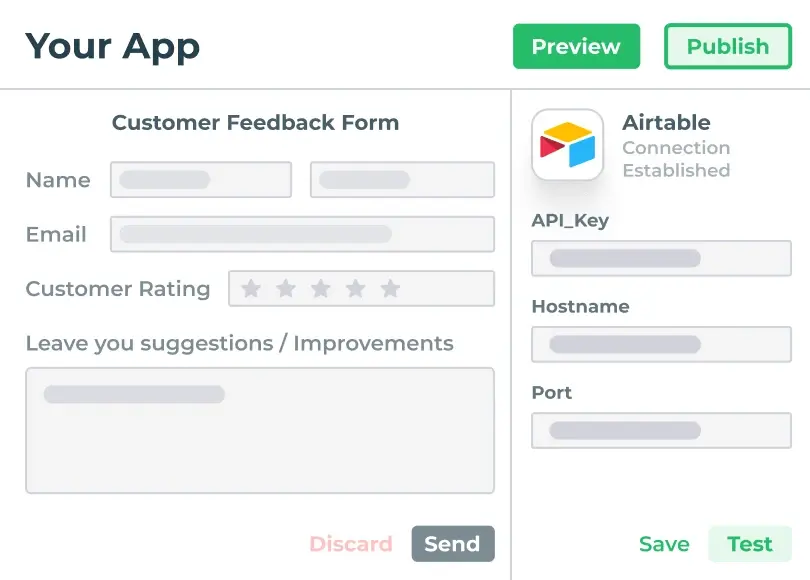
App lifecycle management
With developer-friendly capabilities like version control, audit logs, authentication, user access permissions, debugging and app testing across dev, beta, staging environments, low code promises speed and agility across the application lifecycle.
-
Extensible at every level
-
Move apps through lifecycle phases
-
Enable iterative development
-
Accelerate ideation to operations
75% reduction in development time
Leading India-based Travel Tech company reduced custom app development time by 75% replacing custom code and a lot of backend heavy lifting with DronaHQ low-code platform.
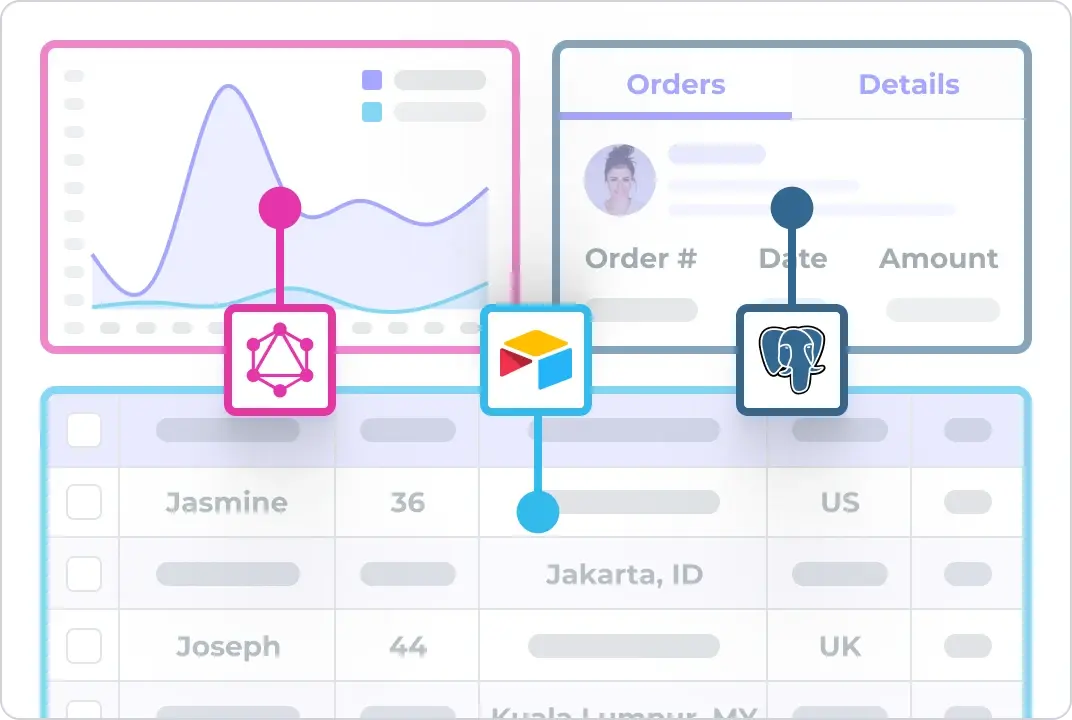
What can you build with low code platform?
From business-facing applications to integrations with third-party solutions. Users can create several types of internal tools and apps.




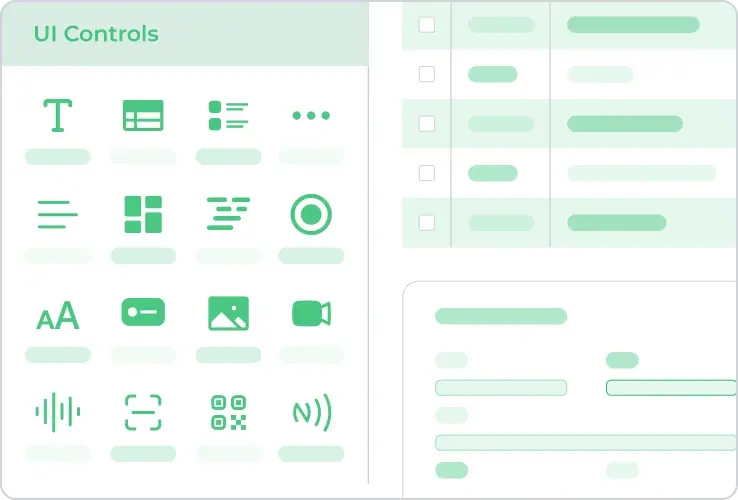
Who can use low code platform?
Low code development platforms are designed for a diverse range of users. The intuitive platform interface makes custom application development in an organization more inclusive.
From professional developers seeking rapid prototyping and workflow automation to business analysts and frontline employees (Citizen developers) aiming to innovate within their domains, low code empowers a broad spectrum of individuals. CIOs, IT heads, react developers, subject matter experts, HR professionals, junior developers, and custom app development agencies – can all harness the benefits of low code to streamline processes, enhance productivity, and swiftly bring their unique ideas to life.
Professional developers can leverage low code platforms to expedite the development lifecycle of digital solutions. With the ability to extend existing applications, integrate diverse data sources, build responsive mobile apps, and automate complex operational tasks, professional developers find a powerful ally in low code. This technology empowers them to navigate through simpler development challenges swiftly, freeing up valuable time to focus on logic and the more bigger/complex projects.
“Incorporating low code into our development process has revolutionized our speed. Recently, I employed it to create and deploy a sophisticated front-end for our database within a mere week. The efficiency gains have been remarkable, allowing me to elevate our development capabilities and take on more complex challenges.” – Software Engineering Manager at a Threat Prevention Company
By adopting low-code platforms, agencies are able to deliver applications 6 times faster than traditional methods, securing faster client buy-ins. Development timelines are reducing by 20-30% time-to-market. With a visual interface, low-code also enables a broader range of professionals to contribute, enhancing overall productivity. The ease of maintenance and clear pricing understanding further contribute to the efficient and cost-effective development of custom apps. Embracing low-code positions agencies to stay ahead in a rapidly changing market.
“We work with IoT enabled product companies, helping them create interfaces for their customers, and how they interact with the IoT product data. Often we face challenges in upgrades and customizations for individual clients, impacting our ability to meet new client requirements. By introducing low code to our stack we’ve seen significant improvements in how quickly we meet customization requests. Client needs a new chatbot widget? No problem, ready in a week. A new dashboard interface within portals for analysis? Done.” – Founder at Web/App development company.
React developers can supercharge their workflow with low-code platforms, accelerating frontend development and enhancing efficiency. With ready-made building blocks, quick data integration, and visual tools, they can rapidly prototype, saving valuable time. Low-code’s flexibility allows for custom coding when necessary, ensuring applications are tailored to specific needs. By fostering collaboration and reducing manual coding, low-code empowers React developers to deliver high-quality applications faster, meeting the demands of today’s dynamic development landscape.
“Creating dynamic interfaces is a breeze. I connect to any datasource. The hackability is revolutionary; I can script JavaScript anywhere, offering unmatched customization. I was hesitant when my team lead suggested we use low-code for some of the apps. But not having to script every little boilerplate, or dealing with complexities of API integration, has been very beneficial.” – React developer at eCommerce company
Both database administrators and backend engineers benefit by using low code platform as it provides an easy-to-use front-end interface to create secure frontend apps and automations, without the need for extensive coding or deep front-end development understanding. With low code, admins gain control over user interactions and permissions, reducing back-and-forth demands. Low code simplifies integration, ensuring secure, enterprise-grade outcomes, and freeing up time for admins to focus on strategic tasks rather than technical complexities.
“Managing extensive data from our factories, scattered across the globe, was like having a vast library without a catalog. DronaHQ emerged as the perfect solution to our challenges. We crafted a dynamic frontend that streamlined data access and reporting, transforming complex operations into seamless tasks.” Read the story
Subject Matter Experts (SMEs) find a powerful ally in low code, enabling them to translate deep domain knowledge into functional applications. With low-code platforms, SMEs bring their unique insights to life, creating apps that enhance operational processes. For instance, an SME in office administrations might develop an app for visitor management and appointment booking or office space booking with real-time updates.
“We run a lean team working with really amanzing clients for their logistics operations. We harnessed low code to develop a real-time shipment tracking widget that our clients now use to pull stats from delivery partner APIs right into their product dashboards, providing actionable insights, reducing delays and improving overall efficiency.”
Citizen developers, often individuals with frontline roles and a knack for technology, wield the transformative capabilities of low code. They become architects of their own solutions, leveraging an IT-approved platform that maintains quality and security. Citizen developers seamlessly turn business ideas into reality, exemplified by instances like streamlining sales workflows or automating inventory management with a user-friendly app.
“Thanks to low code development, our shelved internal tooling requirements finally saw light of the day. Our frontline staff has been in dire need of an intuitive tool for various field-force activities. What used to be a series of manual processes including group messages, spreadsheets, and paper forms, is now automated, improving efficiency and enhancing the overall employee as well as the customer experience. As a team lead I am able to get the logic and frontend in place with minor hand holding in DB queries from our in-house IT.” – Sales Enablement Manager at CPG company
Low code platforms have zero barrier entry when it comes to platform adoption. And so, your firms’ junior developers can also embrace the low code technology and contribute meaningfully to projects. They gain hands-on experience in app development, database and API integration, crafting app business logic, and more.
“Low code has given my team an edge helping us reduce a major chunk of IT backlog. Almost all of our resources would go into critical app development and the business team requirements would take a backseat. Howver, now for a long time, junior developers in the team are able to take up and deliver 30% more projects including internal tools. And credit goes to powerhouse of a developer toolkit that is DronaHQ. Easy to start and extensible!”
HR professionals leverage low code to enhance employee experiences and streamline HR processes. They create apps for onboarding, leave management, or performance tracking. With low code, HR professionals can swiftly respond to evolving organizational needs, exemplified by an app that simplifies the employee onboarding process, ensuring a smooth transition for new hires.
“Using low code, we developed an onboarding app that streamlined the entire process. New hires can now complete paperwork digitally, access training materials, and integrate seamlessly into the company culture from day one. Ready low code templates are game-changers for HR tech.” Learn more >
Try DronaHQ Platform
Comprehensive UI Builder
100+ Pre-built UI Components
Ready API and Database Connectors
Build Apps for Web, iOS, Android
Thank you
We have sent you a verification email, please click link to verify your email address.
Schedule a demo click here By signing up you agree to Terms & Conditions and Privacy Policy
Frequently Asked Questions
Gartner predicts that more than 65 percent of all business apps will be built using low code by 2024. The total market for low code development platforms, is expected to hit as high as $45.5 billion by 2025. Low code is expected to have a dominant position in the future of business application development.
Anyone in the organization can learn to use a low code platform. Capabilities like drag and drop, visual workflow builder, and ready UI templates help users easily visualize and build apps on low code platforms.
BPM software suites were designed to systematically improve each business process, and subsequently improve the efficiency of the organization itself. These software suites made it easy to automate, model, monitor, and streamline everyday business processes.
Low-code development platforms aren’t a replacement for BPMs. They are a technological approach that changes the way BPM services are deployed. Instead of bloated and complicated software suites, platforms like DronaHQ offer configurable tools, resources and components that you can use to whip up your own BPM solutions in a relatively short period, with very little coding knowledge.
Instead of depending on costly and time-consuming manual coding, you can create your own industry- and organization-specific applications with minimal effort. Another great thing—we have API integration abilities with 3rd party SaaS solutions.
Contrary to traditional coding of apps, low-code app development takes advantage of visual development tools—like drag-and-drop modelers, smart services, components, and pre-built connectors—to enable the rapid creation, launch, use, and maintenance of powerful business applications.
Low code is a software development approach that enables one to build applications and processes using visual interfaces with simple logic and drag-and-drop features instead of extensive coding languages.
Low code development platforms provide building blocks that IT users and citizen developers can utilize to build apps and workflows using visual approaches. These building blocks abstract away the code behind actions and commands, making the app development process fast and seamless and accelerating the digital strategies of the organizations.
You don’t have to code line-by-line to create a low code app or process automation. Instead, you visually design it like you would a flowchart.
The traditional development approach is more about exploring and finding the best UI libraries, stitching together data sources, handling errors, saving query results, managing environments, hosting and user access permissions and repeating the same cycle time and again for every new development.
One area where low code can have a significant impact is in the user interface and user experience (UI/UX) of the application. By leveraging pre-built UI components and templates, low code platforms can create consistent and intuitive interfaces that can be easily customized to meet the specific needs of the application. This can help developers focus more on designing engaging experiences for users, rather than spending time on writing code for each individual UI element.
Another way low code can impact UI/UX is by enabling rapid prototyping and iteration. Because low code platforms allow developers to quickly create and modify applications, it is easier to test and refine the user experience. This can result in applications that are better tailored to the needs of users and can improve overall engagement and satisfaction.
Digital business tools are crucial for any customer-facing business. Whether it is a CRM, an admin panel, a website, a dashboard, or a full-blown employee onboarding and training system. These tools increase the productivity of teams, allowing them to better handle their data, streamline operational process flows, and in turn deliver optimum customer experience.
The pressure on developers to deliver innovative mobile and web solutions keeps magnifying. However, only a small group of top-tier companies have the resources to meet the market demand for speed with traditional development.
With low code, a UI/UX designer can do front-end development and a back-end developer can prototype consumer apps.
Developers get more done as they spend more time creating and building and less time on repetitive work.
Leading low code platforms ensure that application, infrastructure, and data protection controls are in place to protect your applications from the most critical security risks. Apps built using low code platform are more secure as with standard security certification, the platforms take care of many security concerns that are usually overlooked during the traditional development process.
By abstracting away repeating line of code and by empowering citizen developers to build apps, low code platforms speed up the jobs of the developers, freeing up their time so they can focus on more critical tasks.
Low code platforms come in all shapes and sizes. This is good news for customers as they get to choose from a large pool of low code vendors that may be specializing in specific domains. The best low code platform, however, is one that can single handedly deliver the output that may otherwise require separate software applications.
Low code automation combines the most critical capabilities needed to automate organization wide workflows that may be manual routine tasks, integrating disparate systems, execute complex processes, facilitate collaborative work, executing complex business logic.
Anyone from a line of business manager to a professional developer can use low code platform to build internal tools and applications. The platform’s intuitive capabilities make it possible for technology leaders to empower anyone within the company to create apps and automate their work.
Low code helps to create a wide range of applications for employees, partners and customers. Most commonly low code platforms have been used to built employee and partner-facing web portals and mobile apps to innovate and optimize their functions, and extend or replace existing legacy systems.
Both low code and no code platforms use graphical interfaces that enable users to visually create business apps and tools. While it reduces the amount of code that needs to be written, no code completely eliminates the need to write code.
Low code is hackable. It retains the ability to code, say extending the app’s functionality with JavaScript. No code abstracts away the code and it is more meaningful for citizen development. Low code app development caters to both the citizen and professional developers.
The traditional development approach is more about exploring and finding the best UI libraries, stitching together data sources, handling errors, saving query results, managing environments, hosting and user access permissions and repeating the same cycle time and again for every new development.
In comparison, low-code platforms are much easier to use and operate due to their drag and drop features. Further, unlike custom development, you do not have to write codes here for developing the applications, as you can simply use the drawing methods to do the same.
Low code database solutions allow you to create your own databases, add or remove data, modify fields, and keep track of all your data, all without having to learn a query language.
It works in the same principle as low-code development platforms. You can visually create databases as you would low-code apps. Instead of learning query commands and scripts, the functions you need are already programmed into low-code database solutions.
This saves you from having to employ an entire team for database management. Buying low-code databases are much less expensive than having to constantly have a team on staff.
